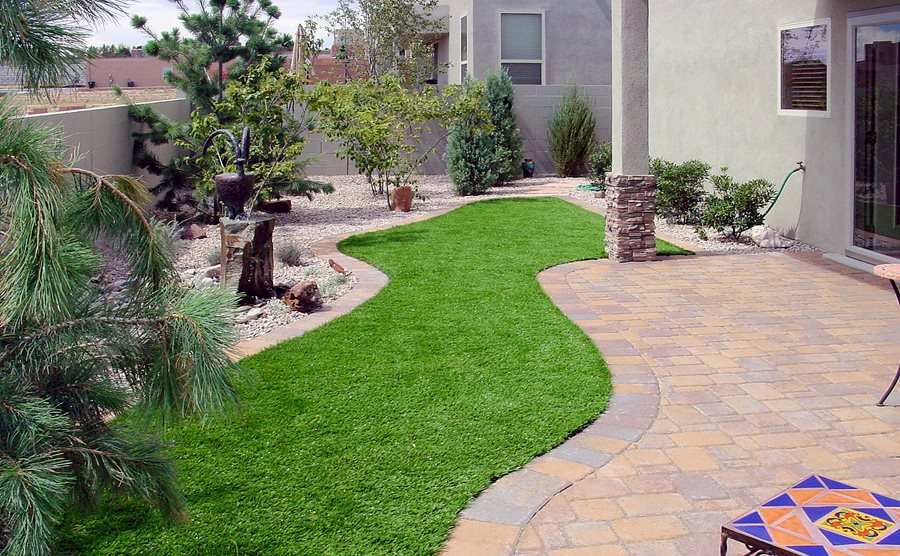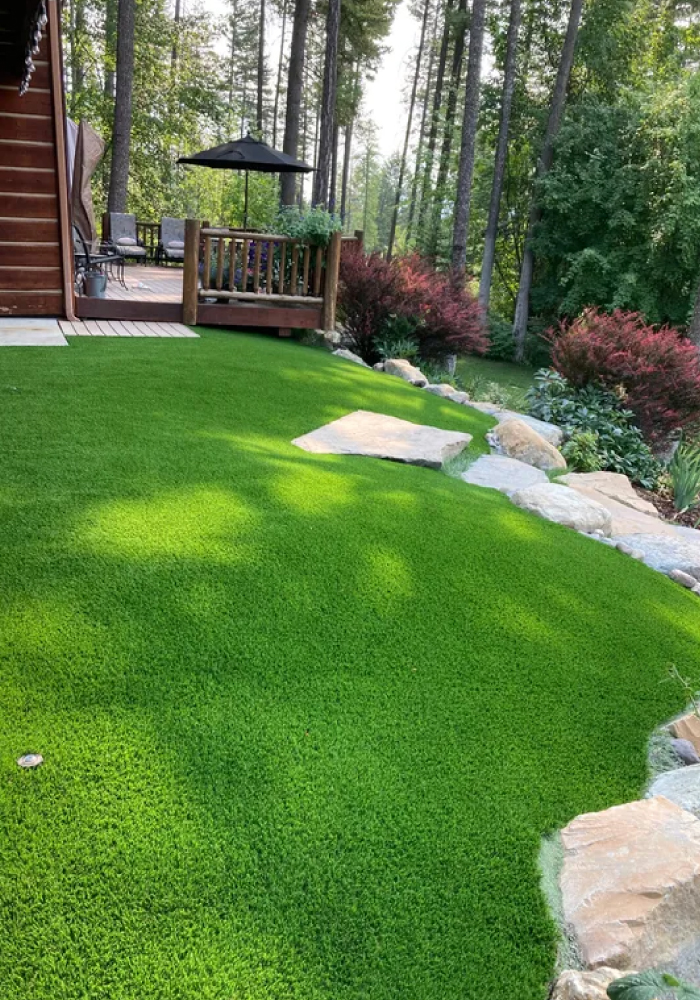Delve Into the Environmental Advantages of Opting for Artificial Grass Solutions
The fostering of fabricated lawn solutions offers a compelling chance to address pushing environmental obstacles. By considerably decreasing water use and reducing the application of unsafe chemicals, these options not just advertise lasting landscape design but additionally secure local ecological communities.
Water Conservation Conveniences
One of the most substantial advantages of synthetic turf is its ability to preserve water. In comparison, man-made grass does not need watering, significantly decreasing the overall need for water sources.
By eliminating the demand for regular watering, man-made lawn adds to sustainable landscape techniques and helps alleviate the ecological impact of extreme water intake. The conservation of water prolongs to the reduction of overflow, which can lead to soil disintegration and river air pollution.
Additionally, the installment of synthetic grass enables property owners and communities to allot water sources extra efficiently, concentrating on important uses such as drinking water and agriculture. The shift towards artificial turf not only advertises liable water use yet additionally straightens with broader environmental objectives aimed at maintaining natural deposits.
As neighborhoods increasingly prioritize sustainability, the water conservation advantages of synthetic grass offer a compelling situation for its fostering in property and commercial landscape design jobs.
Decreased Chemical Usage
The change to fabricated grass considerably decreases the dependence on chemical therapies frequently made use of in all-natural turf maintenance. Typical grass management generally involves the application of herbicides, chemicals, and fertilizers to promote growth and control parasites. These chemicals can posture dangers to human health, neighborhood wild animals, and the atmosphere, contributing to dirt and water contamination.
In comparison, artificial grass removes the requirement for these hazardous materials. By reducing the launch of synthetic compounds into the ecosystem, synthetic grass advertises much healthier dirt and water systems.
Moreover, the absence of chemical runoff related to man-made lawn installments helps protect regional waterways from contamination, sustaining marine life and keeping biodiversity. Arizona turf. As communities increasingly prioritize sustainable practices, opting for synthetic grass presents a viable solution that straightens with ecological conservation goals. Through this change, residential property owners can delight in lush green rooms without endangering environmental health, leading the way for an extra sustainable future
Lower Carbon Impact

Furthermore, the setup of artificial grass can cause substantial water preservation. All-natural lawns call for significant quantities of water for irrigation, which not just contributes to the carbon impact related to water removal and treatment yet additionally strains regional water resources. In contrast, synthetic grass needs very little upkeep, calling for no watering, thereby dramatically reducing water usage and its associated energy expenses.
Furthermore, the long life of synthetic grass contributes to its reduced carbon look at this website impact. With a life expectancy of as much as 15 years or even more, the requirement for regular substitutes is lessened, causing much less waste and reduced power intake in production and disposing of typical turf options. In general, man-made grass provides a sustainable option for environmentally conscious landscaping.
Habitat Conservation
Environment conservation is a critical factor to consider in the discussion over landscape design selections, specifically when contrasting synthetic grass to natural turf. Natural lawn yards often require substantial upkeep, including the use of fertilizers, herbicides, and chemicals, which can adversely influence regional environments. These chemicals can leach right into the dirt and waterways, damaging native vegetation and fauna and disrupting neighborhood habitats.
In contrast, fabricated grass presents a possibility to minimize the eco-friendly footprint of landscape design. By selecting artificial turf, house owners can reduce the disruption of all-natural habitats linked with standard lawn treatment practices. Fabricated turf removes the demand for dangerous chemicals, thereby securing nearby wildlife and keeping the integrity of bordering ecosystems. The setup of synthetic lawn can lead to the conversion of former yard areas right into more biodiverse landscapes, such as pollinator gardens or indigenous plant locations, which can support regional wildlife.
Inevitably, the change to synthetic grass not just saves water and decreases maintenance initiatives yet additionally promotes a much more harmonious relationship in between human tasks and the all-natural atmosphere, promoting habitat preservation at the same time.
Long-Term Sustainability
Long-lasting sustainability is a crucial factor in assessing the advantages of man-made lawn over typical lawn lawns. Among the most significant advantages of man-made turf is its durability; it can last approximately 15-20 years with very little maintenance, whereas all-natural yard calls for frequent reseeding and substitute. This longevity lowers the requirement for constant resources, such as water, fertilizers, and chemicals, which are important for keeping a healthy yard lawn.
In addition, man-made turf adds to a reduction in carbon exhausts website link connected with lawn treatment devices. Conventional grass commonly need gas-powered mowers, leaners, and blowers, every one of which contribute to air contamination. Turf installation phoenix az. On the other hand, synthetic grass removes the need for such devices, advertising a cleaner setting
Moreover, the production of synthetic grass increasingly uses recycled products, enhancing its sustainability profile. As makers adopt eco-friendly methods, the ecological impact of artificial turf proceeds to lessen.

Verdict
The adoption of synthetic grass remedies provides substantial environmental advantages, including considerable water preservation, lowered dependence on damaging chemicals, and a reduced carbon impact. Additionally, synthetic grass aids in maintaining all-natural environments by lessening land disruption and promoting long-term sustainability through using durable materials. Collectively, these aspects emphasize the possibility of artificial turf to contribute positively to environmental wellness and use a sensible choice to standard landscaping techniques in a significantly resource-conscious globe.
In comparison, synthetic lawn does not require watering, considerably lowering the general demand for water sources. By reducing the launch of synthetic substances into the ecosystem, fabricated grass promotes much healthier soil and water systems.
Furthermore, the setup of synthetic lawn can result in significant water conservation. In comparison, fabricated grass needs marginal maintenance, needing no watering, therefore dramatically reducing water usage and its associated energy costs.
